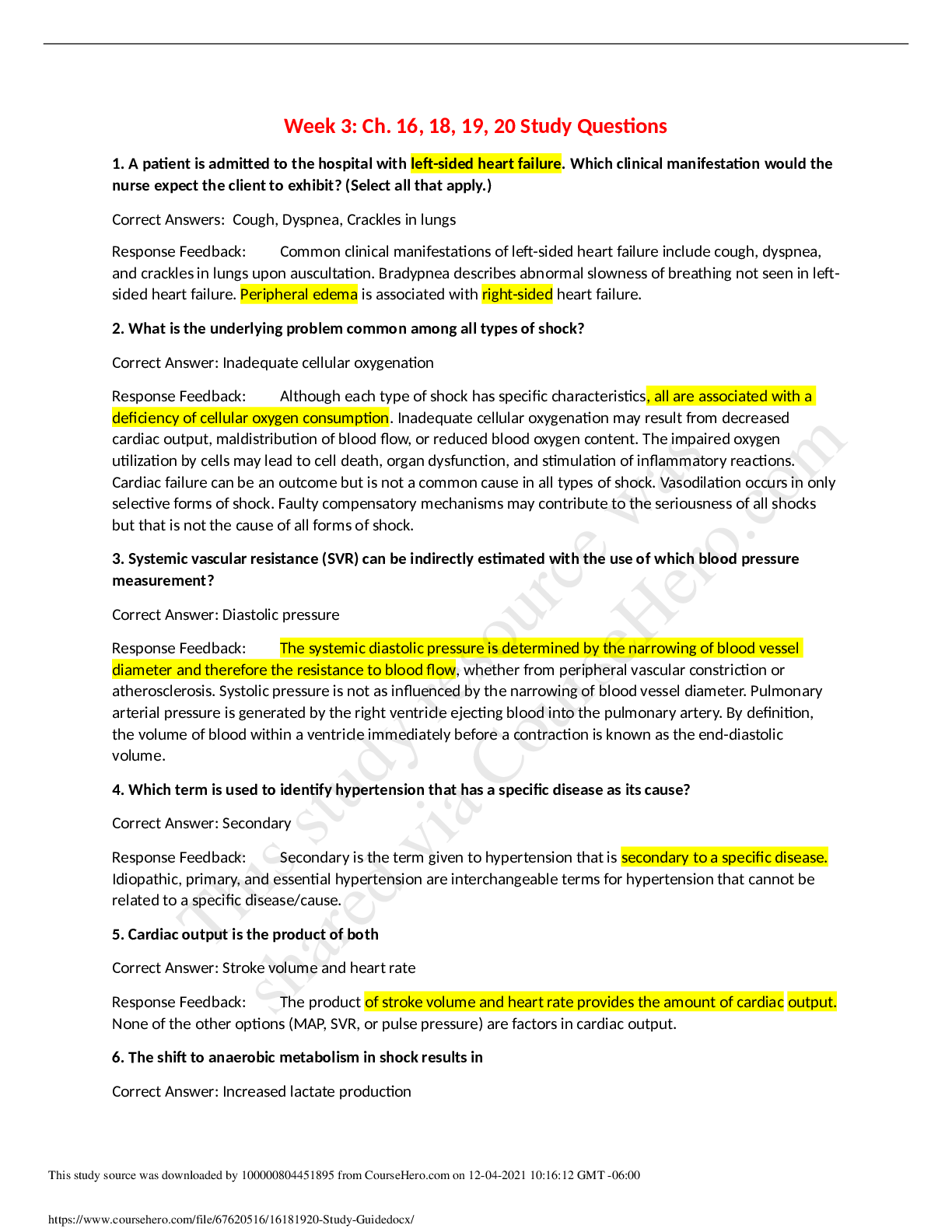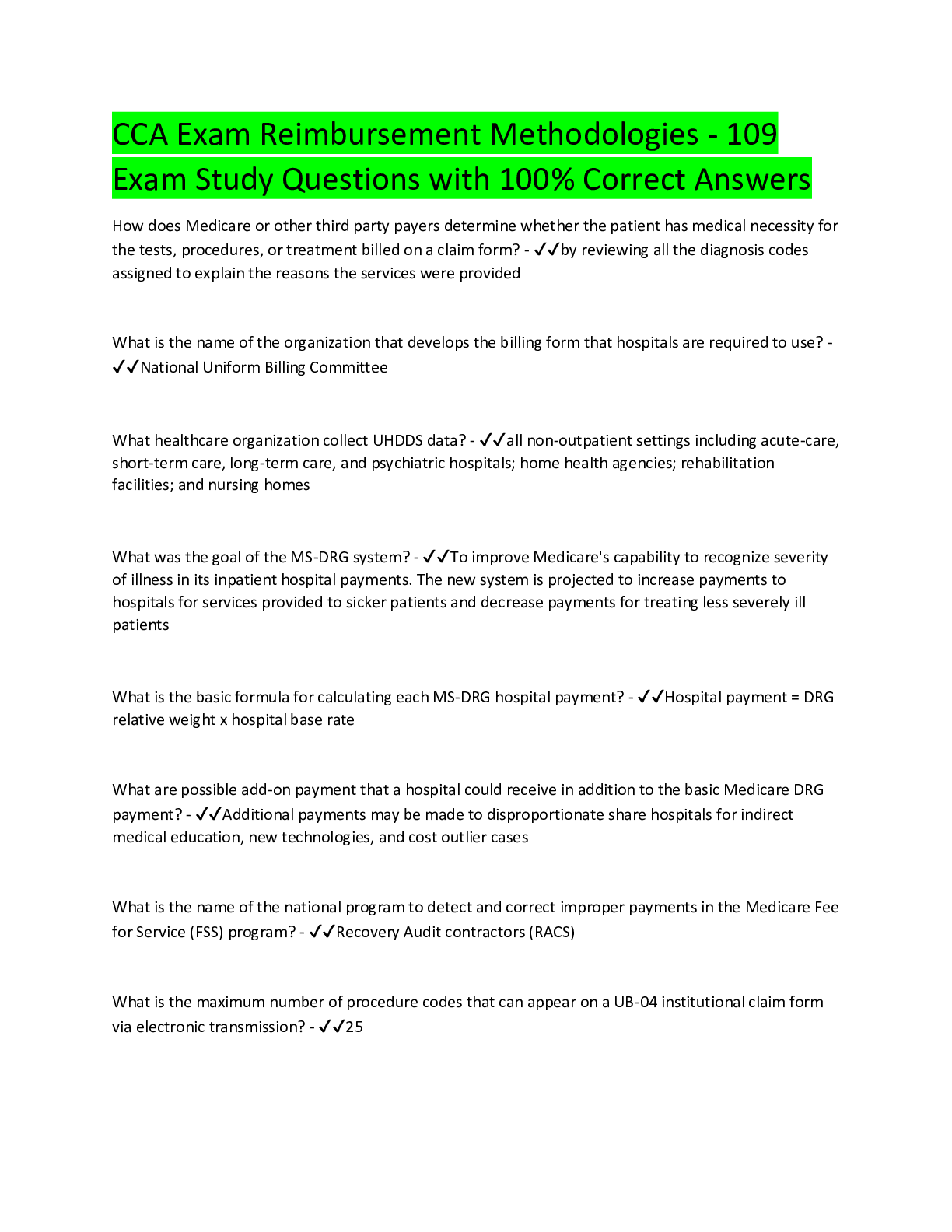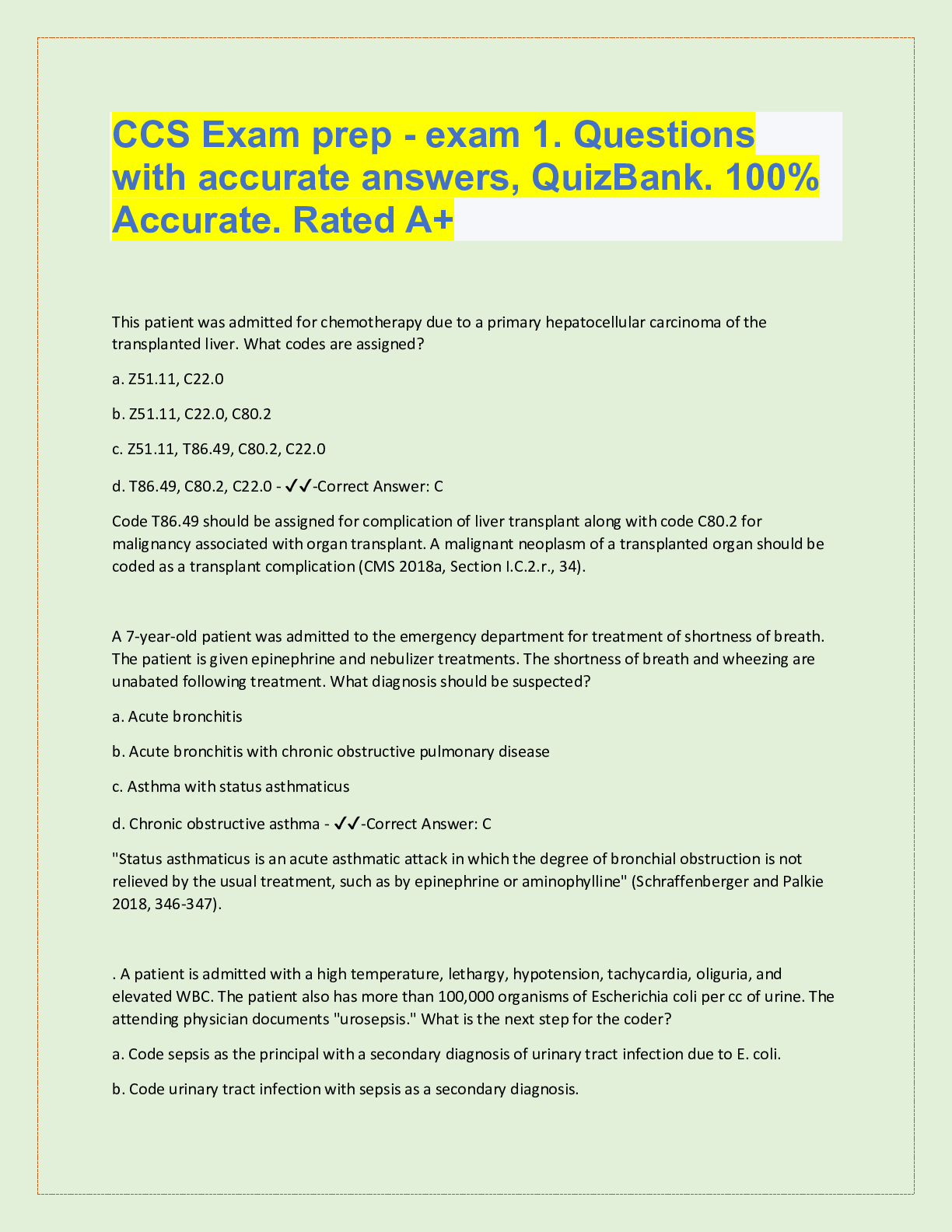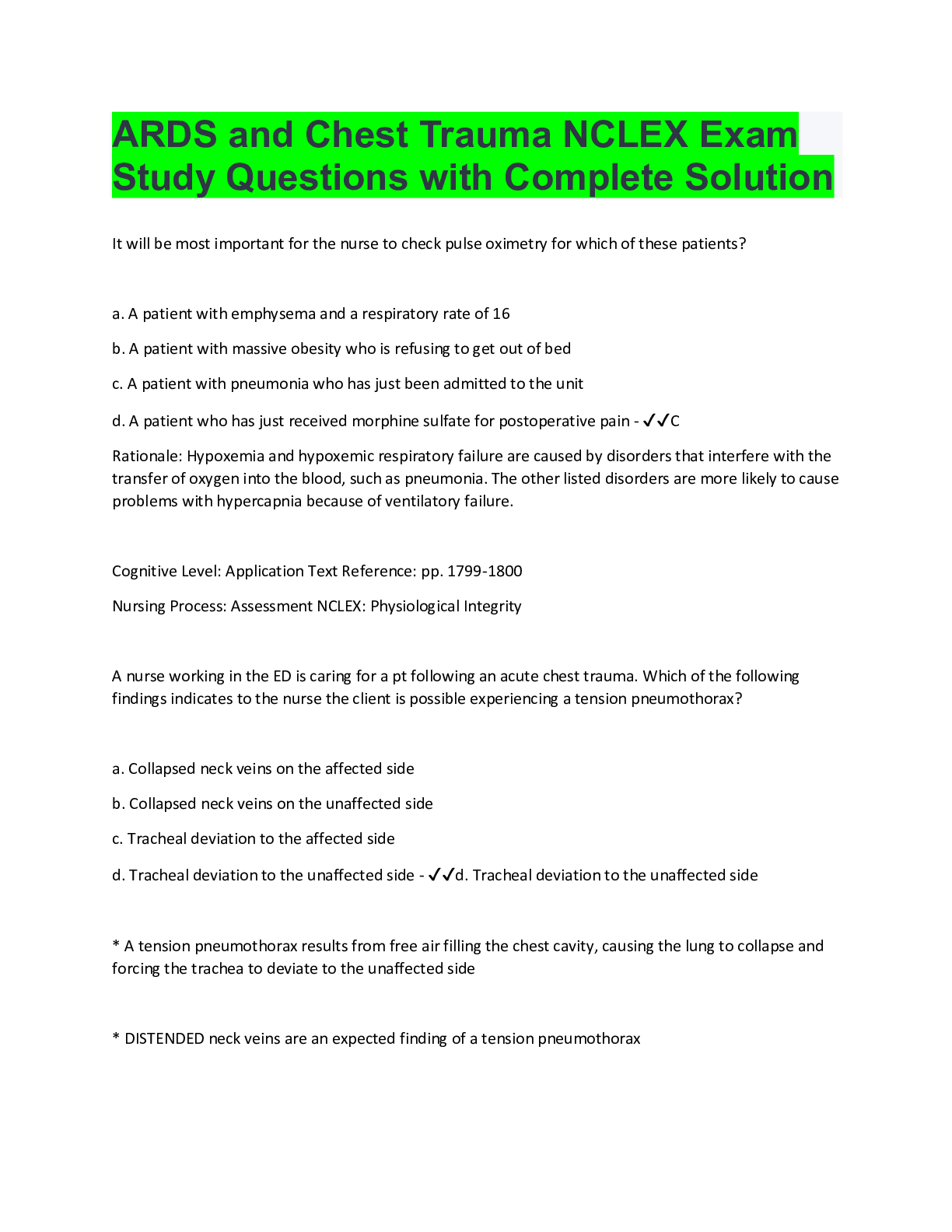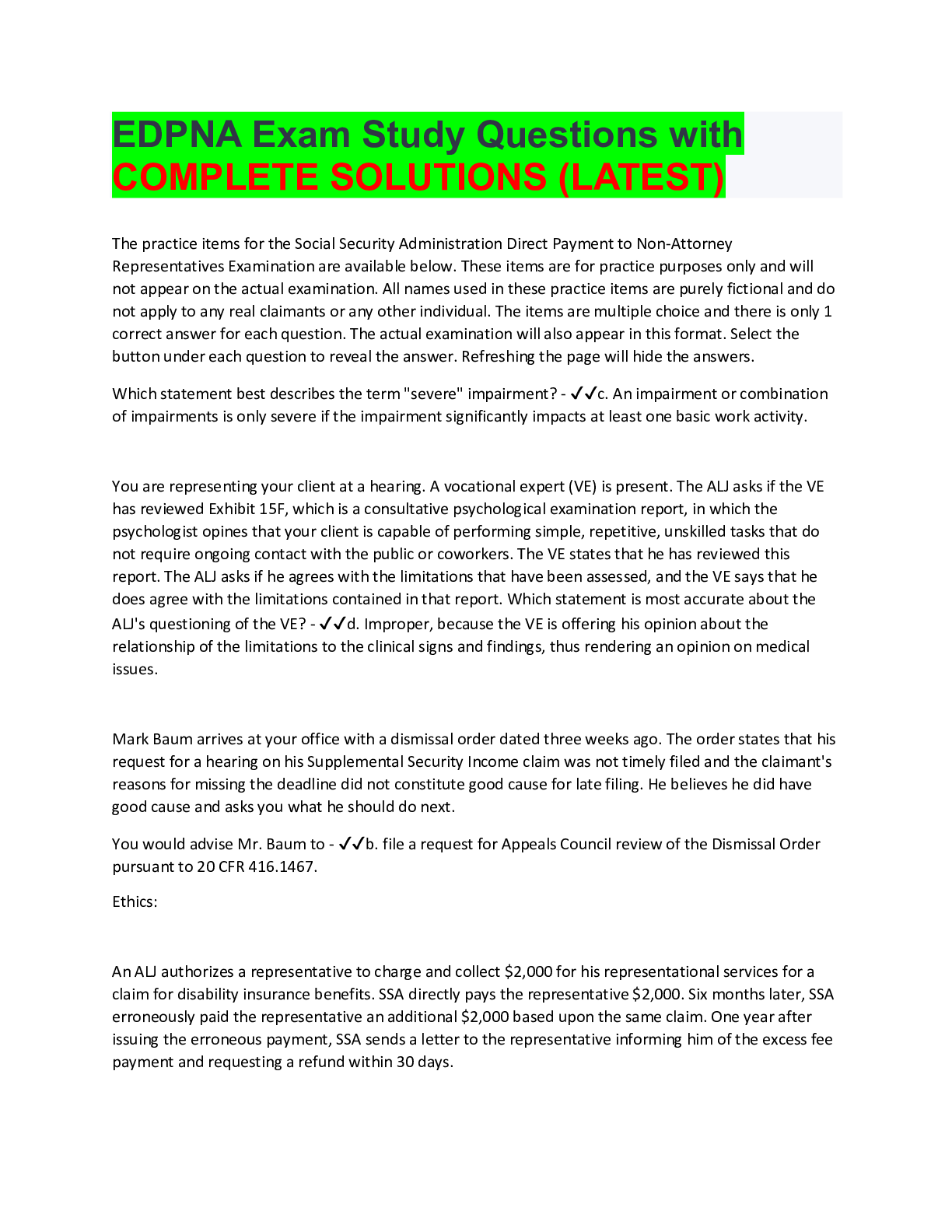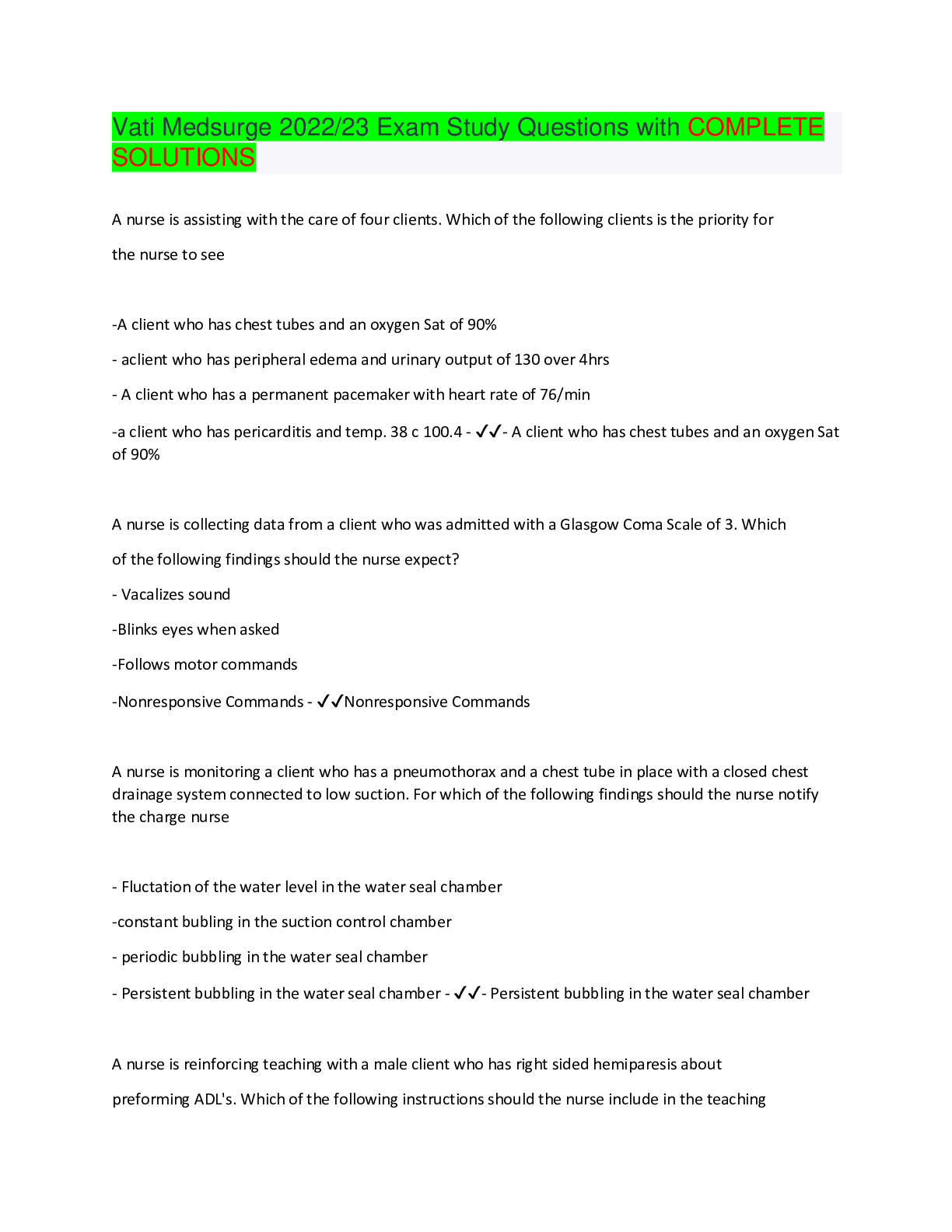Health Care > EXAM > PATHOPHYSIOLOGY-EXAM 1 STUDY QUESTIONS WITH RATIONALE WITH ANSWERS, A GRADE (All)
PATHOPHYSIOLOGY-EXAM 1 STUDY QUESTIONS WITH RATIONALE WITH ANSWERS, A GRADE
Document Content and Description Below
Pathophysiology-Exam 1 Study Questions with Rationale/Pathophysiology-Exam 1 Study Questions with Rationale/Pathophysiology-1. It is true that a eukaryotic cell: A Is smaller than a prokaryotic cell.... B Contains structures called organelles. C Lacks a well-defined nucleus. D Does not contain histones. Eukaryotic cells contain organelles and histones, they have a well-defined nucleus, and are larger than prokaryotic cells. 2. The function of a histone found in a eukaryote cell focuses on cellular: A Division B Movement C Activities D Deoxyribonucleic acid (DNA) folding The histones are binding proteins that cause the supercoiling of DNA into chromosomes and do not affect cellular division, movement, or activities. 3. An organelle that is responsible for the metabolism of cellular energy is referred to as a/an: A Golgi complex B Mitochondrion C Endoplasmic reticulum D Nucleolus Mitochondria play a role in cellular metabolism, cellular respiration, and energy production. The Golgi complex is responsible for processing and packaging proteins from the endoplasmic reticulum, where they are synthesized. The nucleolus is a small, dense structure that contains the ribonucleic acid (RNA), DNA, and DNA-binding proteins. 4. Which statement best describes a desmosome? A A desmosome is a barrier to diffusion. B Desmosomes hold cells together by continuous bands. 2 C A desmosome is a communicating tunnel. D Desmosomes function as a zona occludens. The desmosome is a type of cell junction. The other two types include tight junctions and gap junctions. Desmosomes hold cells together by forming a continuous band of epithelial tissue or belt (or button like) points of contact. They are also a source of structural stability. Tight junctions serve as barriers to diffusion and prevent the movement of substances through transport proteins. Gap junctions are clusters of communicating tunnels. 5. Which statement describes the function of a second messenger? A Extracellular ligand that binds with membrane-bound receptors B Intracellular enzyme that once will trigger a cascade of intracellular events C Chemical messenger that opens specific channels in the cell membrane D Chemical messenger that blocks a membrane-bound receptor signal The binding of a ligand to a cell surface receptor triggers the activation of intracellular second messengers. Second messengers activate signal transduction pathways in the cell that can initiate different intracellular events. Cyclic adenosine monophosphate (cAMP) and calcium (Ca++) are the two major second-messenger pathways. First messengers are the extracellular ligands that bind to cell surface receptors. Binding of first messengers can result in the opening or closing of specific cell membrane channels or the activation of second messengers. 6. Which statement is correct regarding cellular energy? A Glycolysis is the building of sugar molecules. B Oxidative cellular metabolism is a single reaction making adenosine triphosphate (ATP). C Oxidative phosphorylation occurs in the mitochondria. D Anaerobic glycolysis occurs in the presence of oxygen. Oxidative phosphorylation occurs in the mitochondria. This is the mechanism by which the energy produced from carbohydrates, fats, and proteins is transferred to ATP. Glycolysis is a process that breaks down glucose molecules; it produces a net of two ATP molecules. Oxidation is a process during which a pair of electrons are removed and transferred. Oxidative cellular metabolism involves 10 biochemical reactions. Anaerobic glycolysis occurs in the absence of oxygen. Aerobic means in the presence of oxygen. Awarded 0.0 points out of 1.0 possible points. 7. Movement of a solute molecule from an area of high concentration to an area of low concentration is called: 3 A Diffusion B Filtration C Osmosis D Hydrostatic pressure Diffusion is the movement of a solute from an area of high concentration to an area of low concentration. Osmosis is the movement of water down a concentration gradient from an area of higher water concentration to an area of lower water concentration. Filtration is the movement of water and solute through a membrane because of a greater pushing pressure on one side of the membrane than the other. Hydrostatic pressure is the mechanical force of water pushing against a cell membrane. 8. Which of the following is an example of an energy-releasing process? A Anabolism B Catabolism C Substrate-induced reaction D Second messenger system [Show More]
Last updated: 6 months ago
Preview 1 out of 42 pages

Buy this document to get the full access instantly
Instant Download Access after purchase
Buy NowInstant download
We Accept:

Reviews( 0 )
$13.00
Can't find what you want? Try our AI powered Search
Document information
Connected school, study & course
About the document
Uploaded On
Jan 23, 2021
Number of pages
42
Written in
Additional information
This document has been written for:
Uploaded
Jan 23, 2021
Downloads
0
Views
90

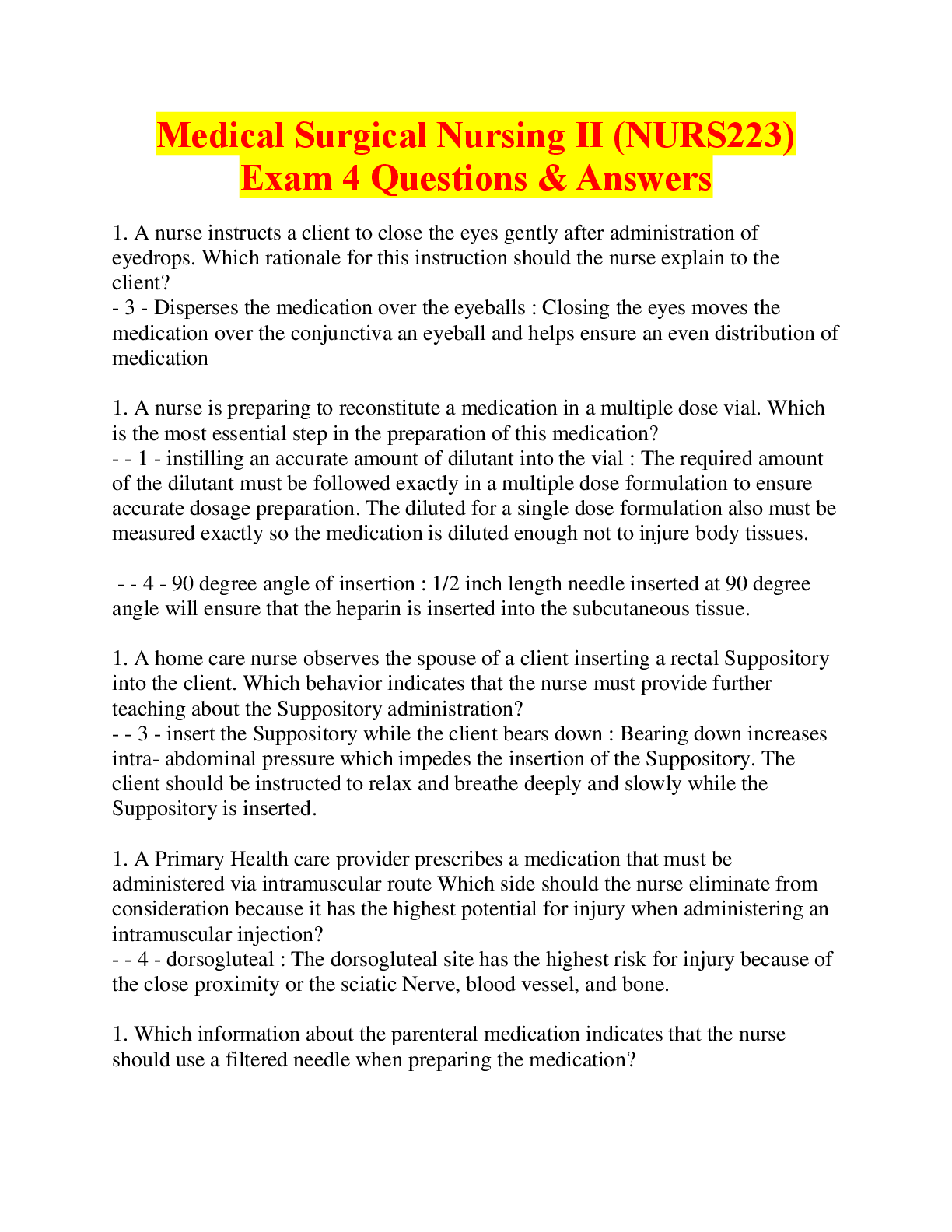
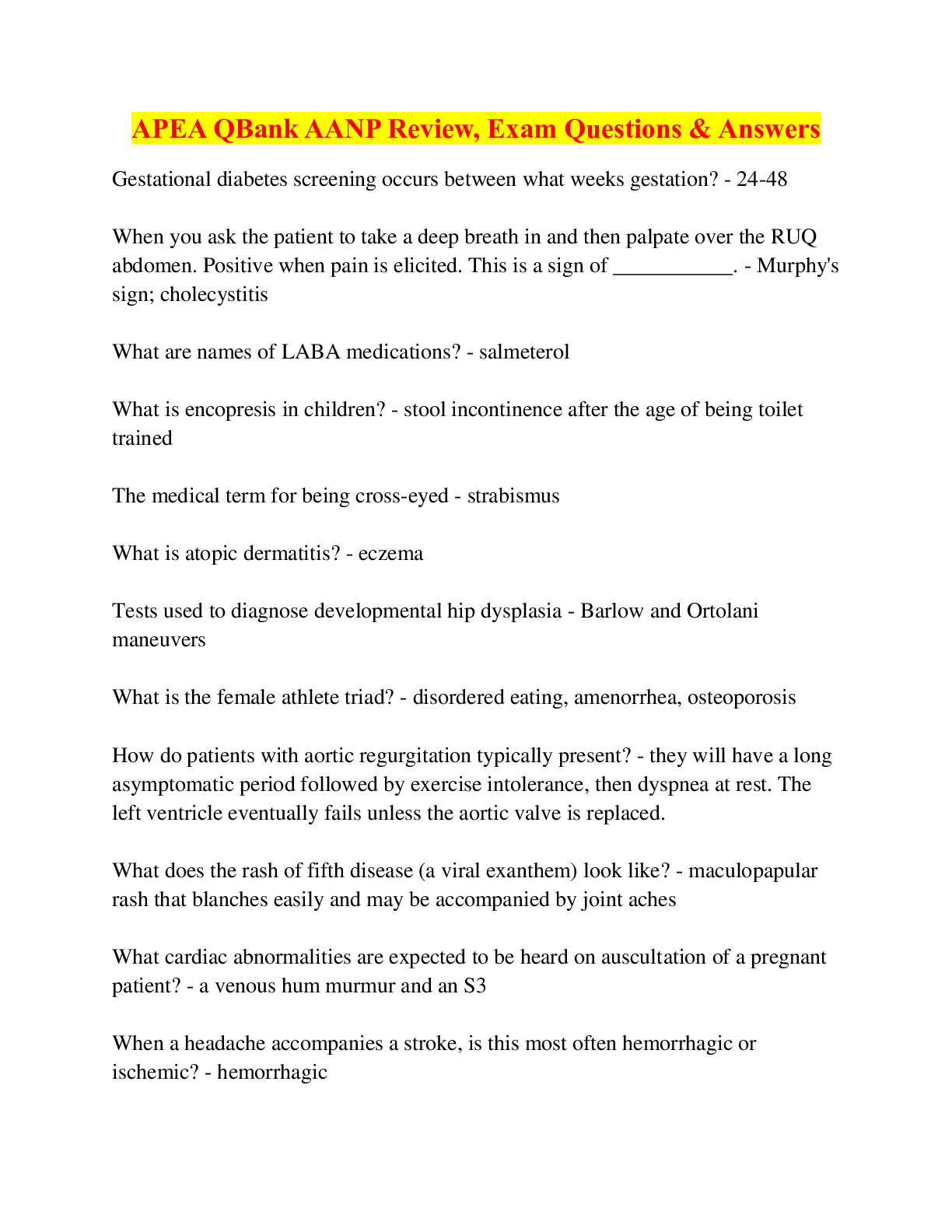
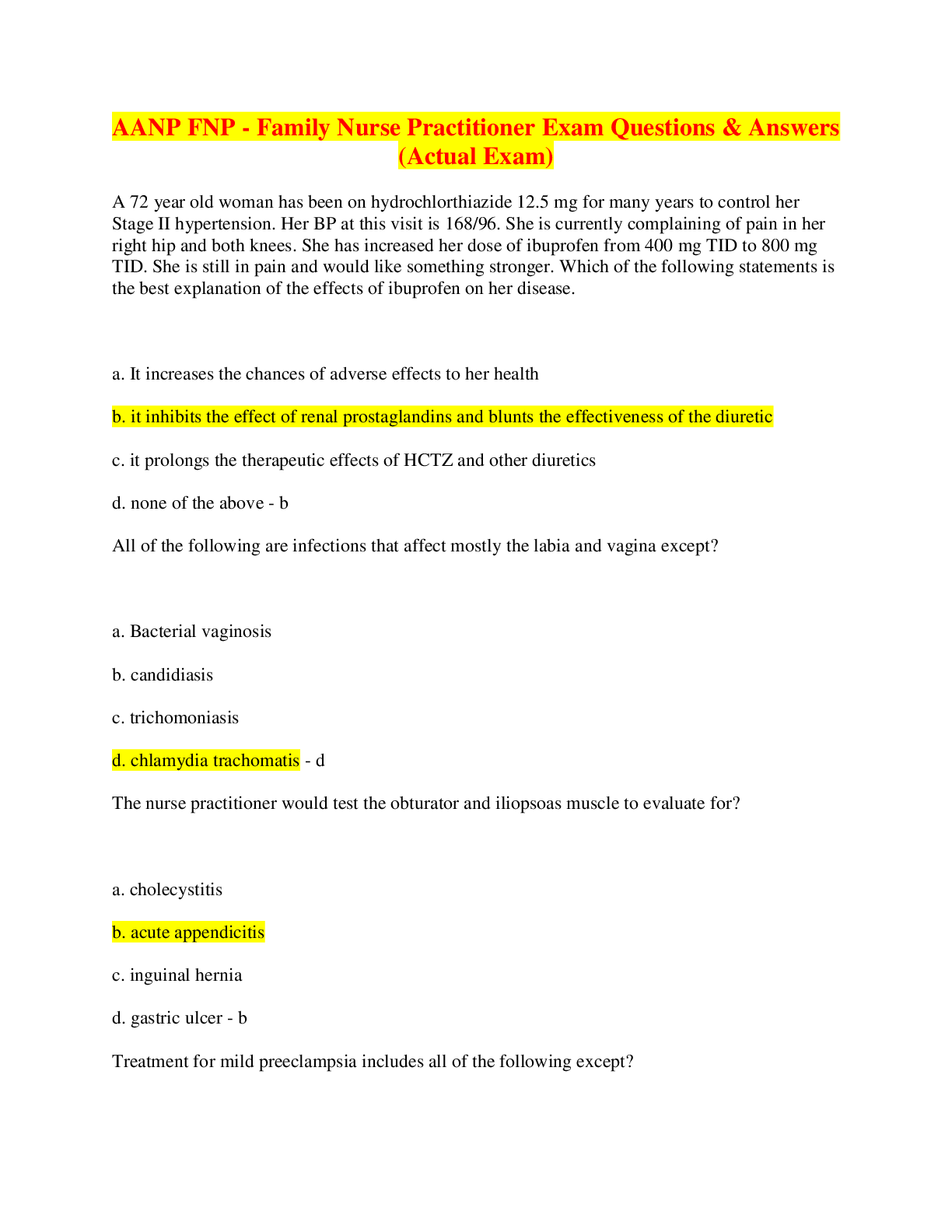
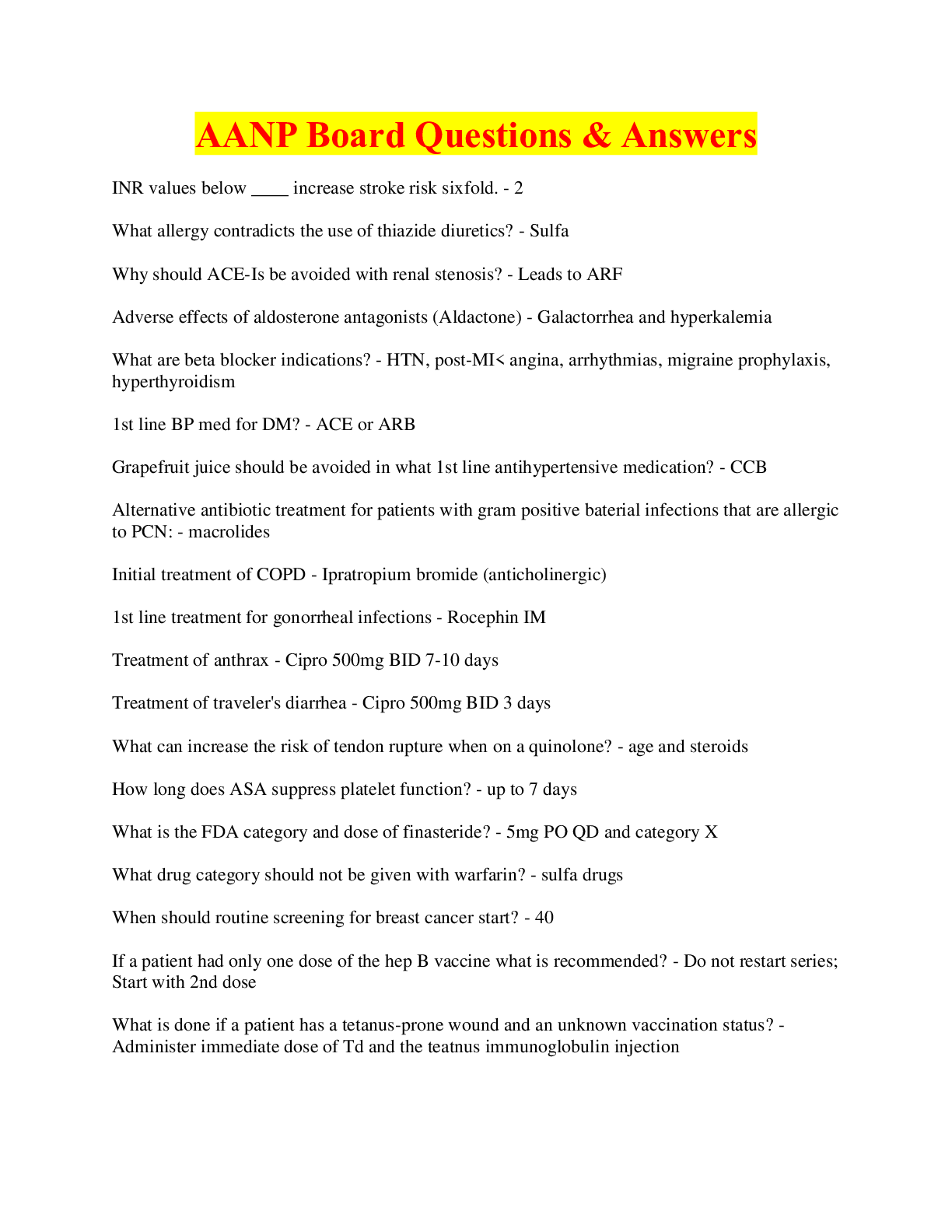
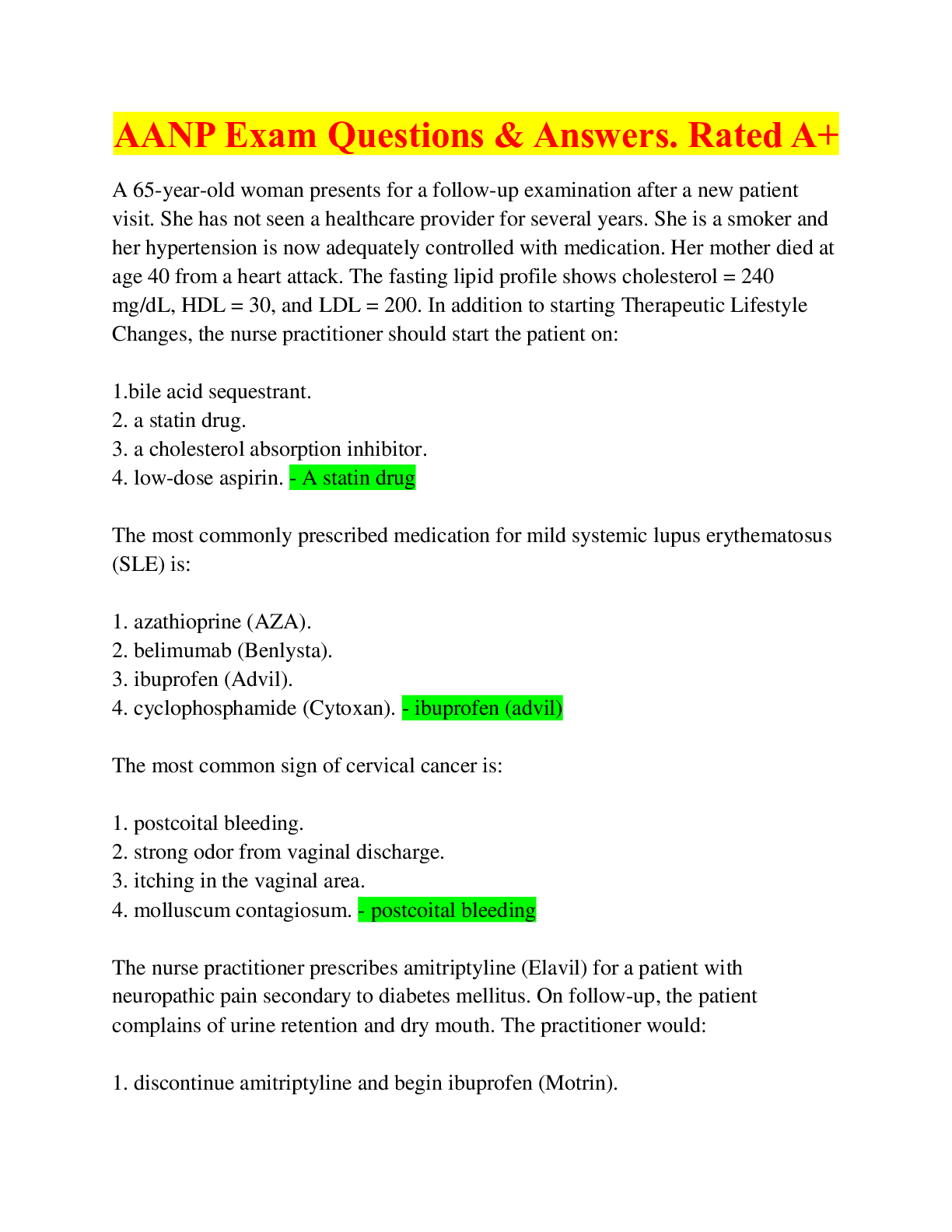
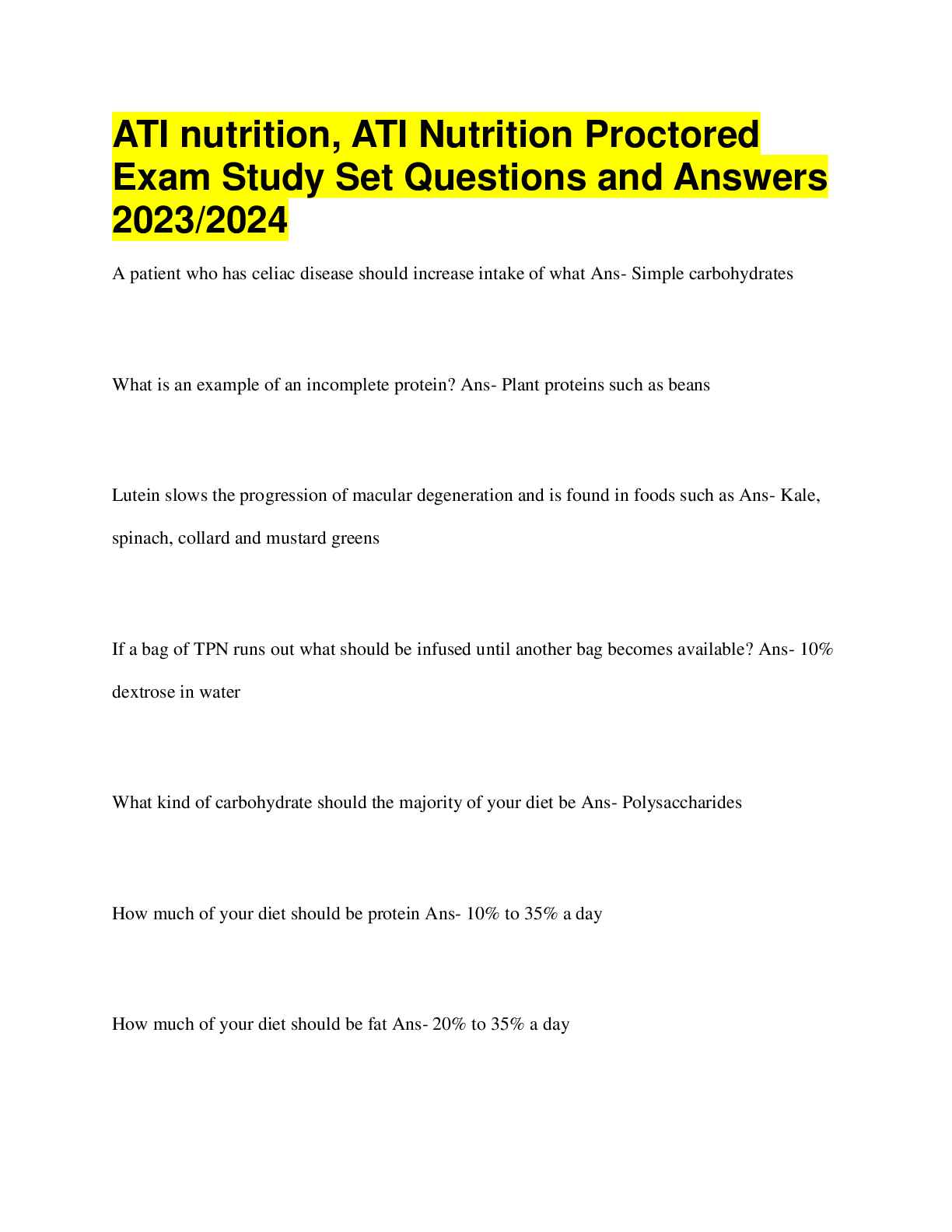
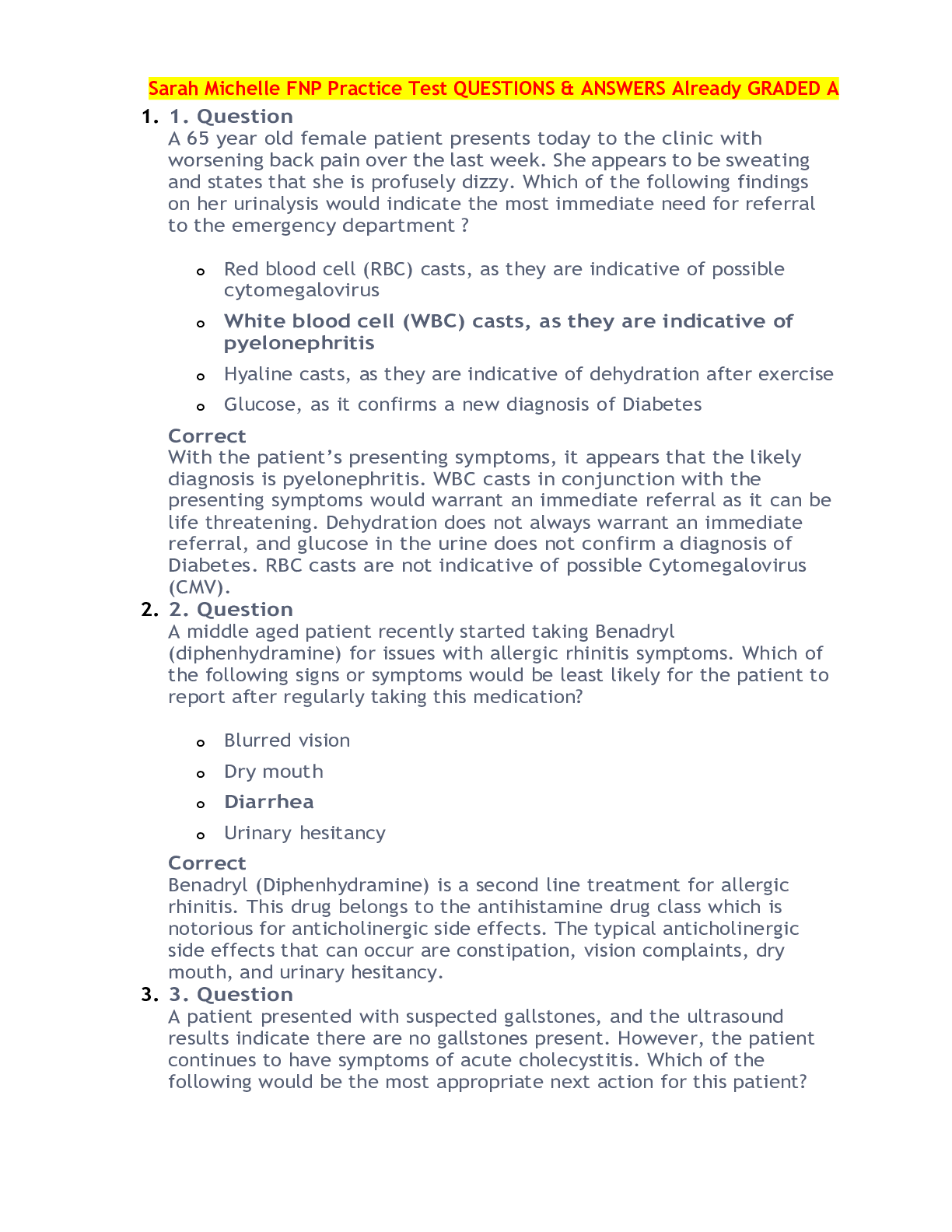
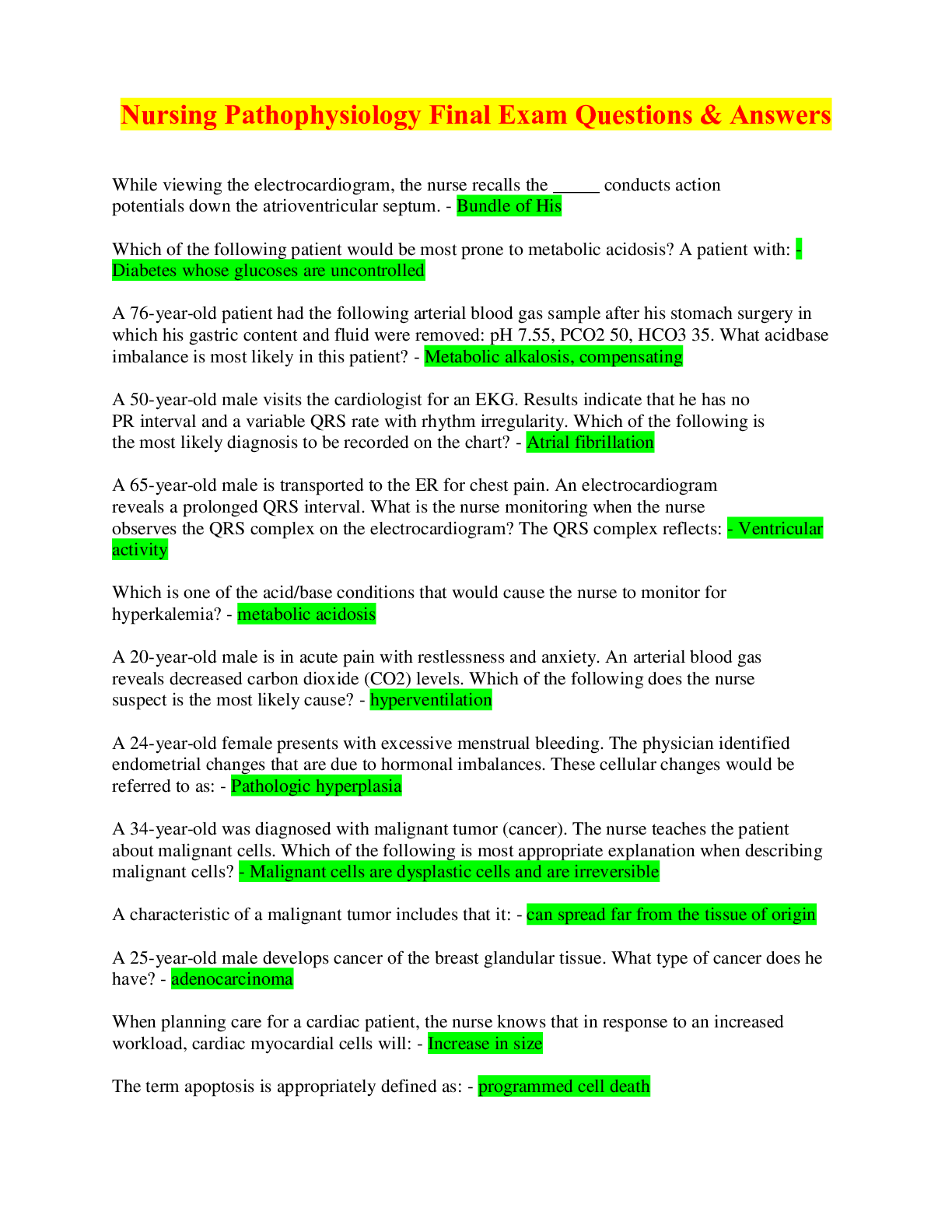
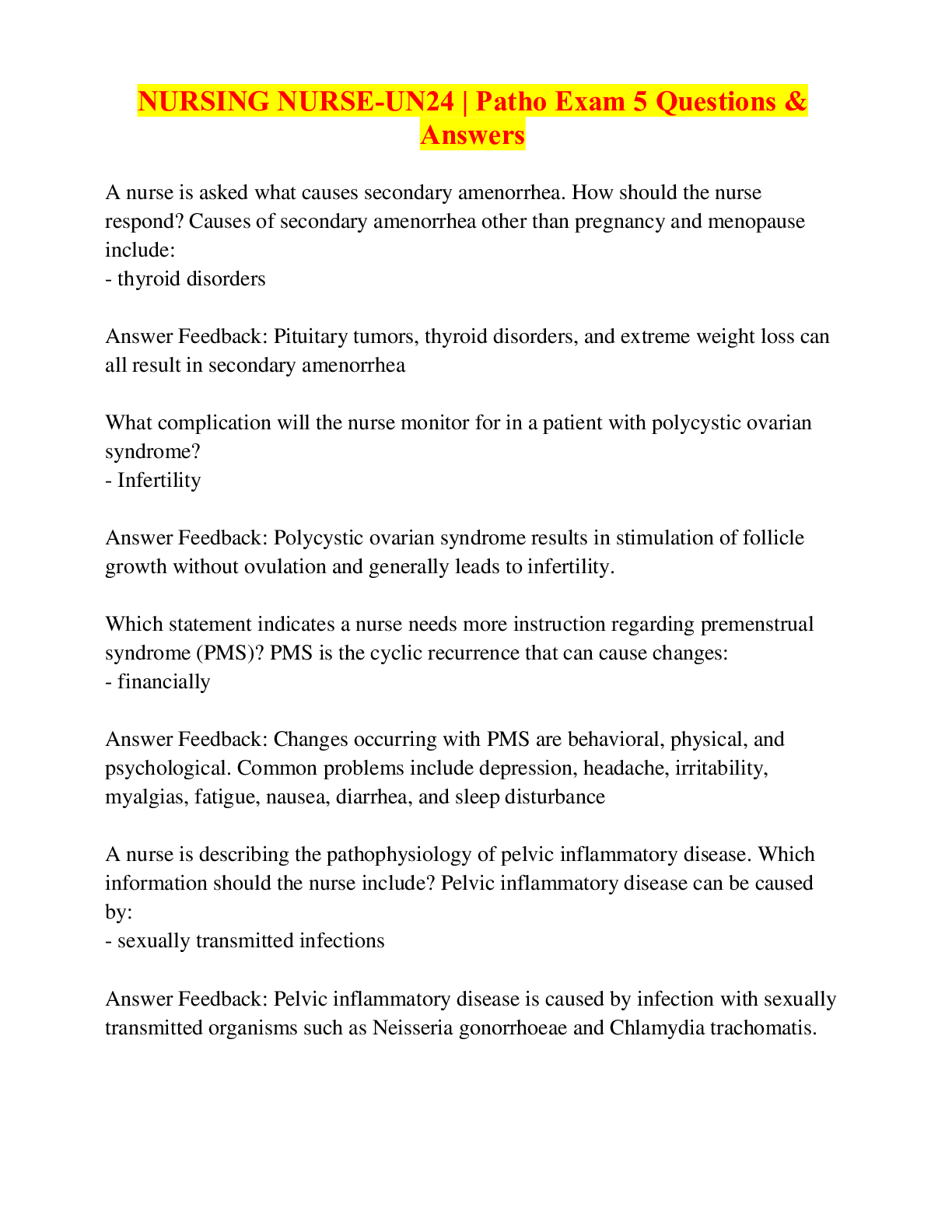

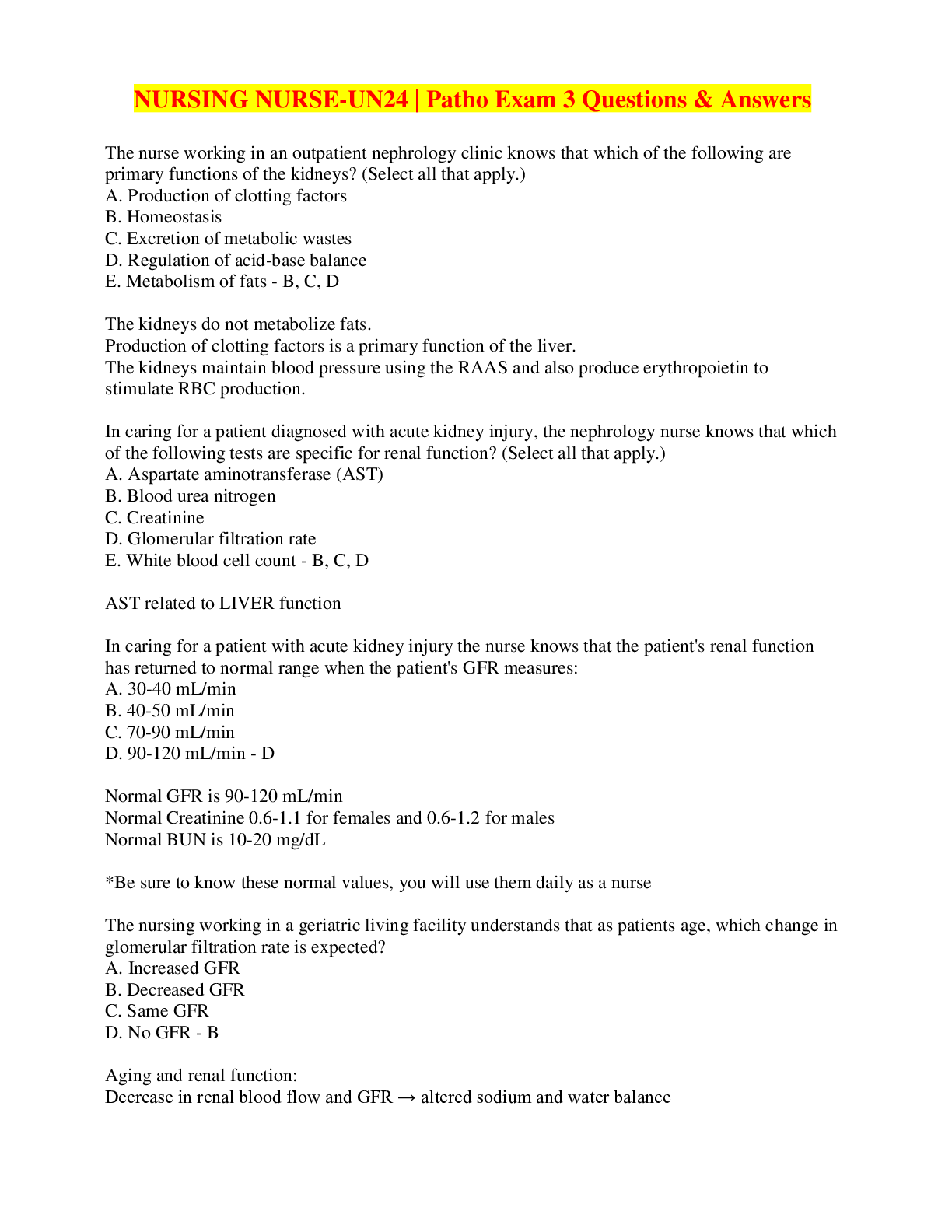
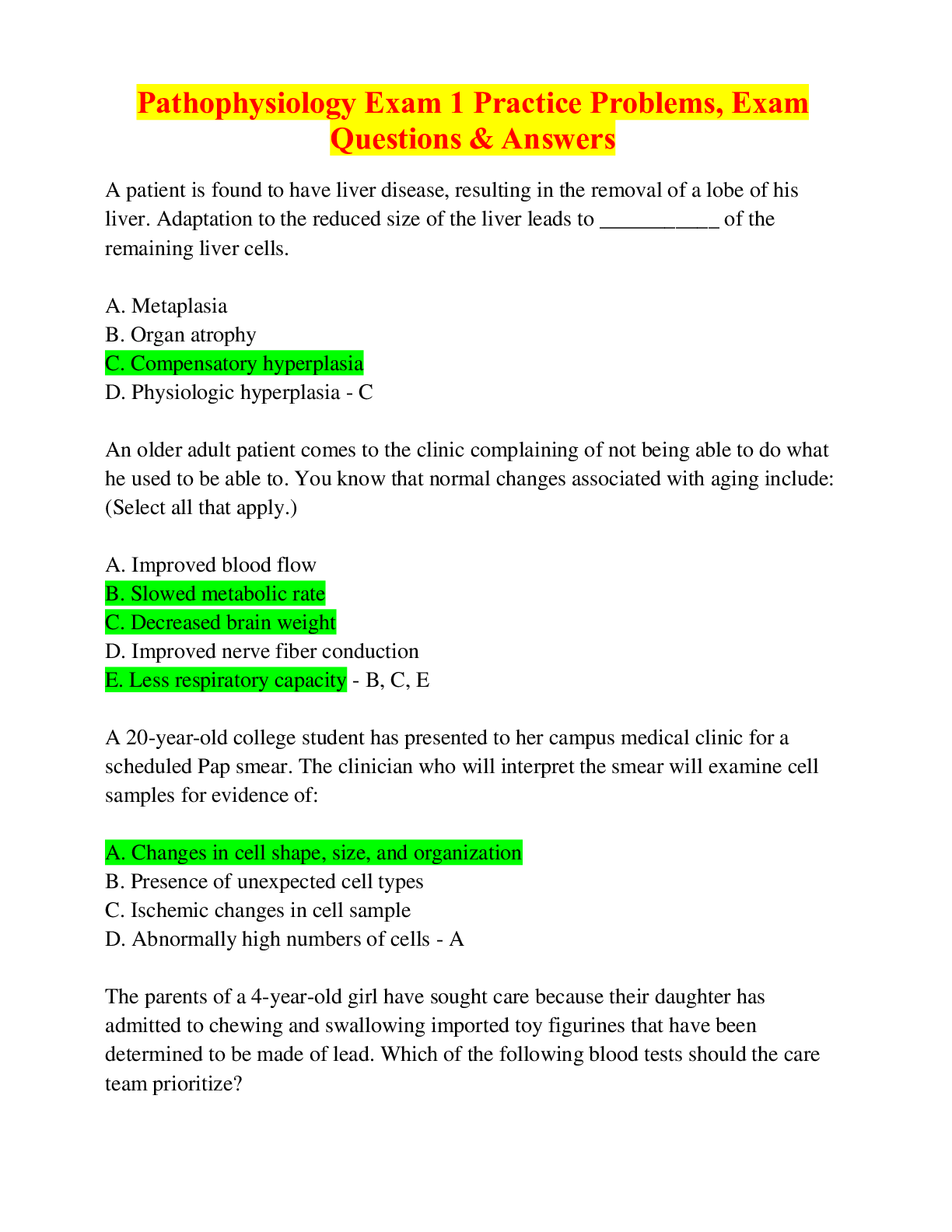

.png)

